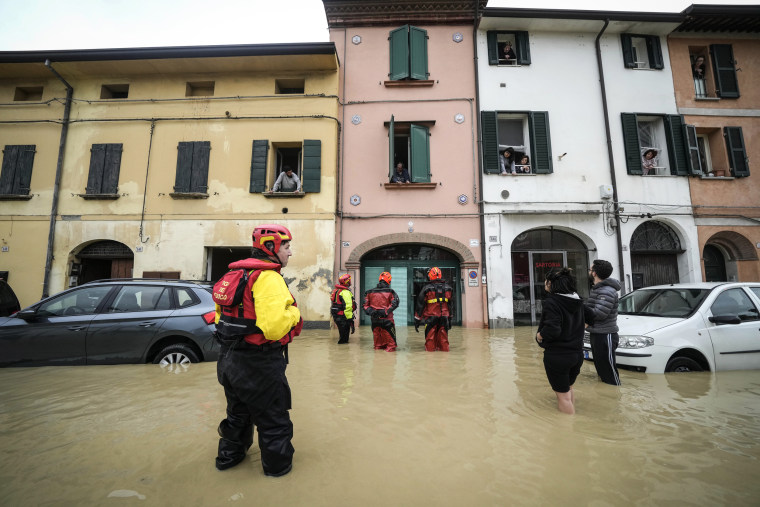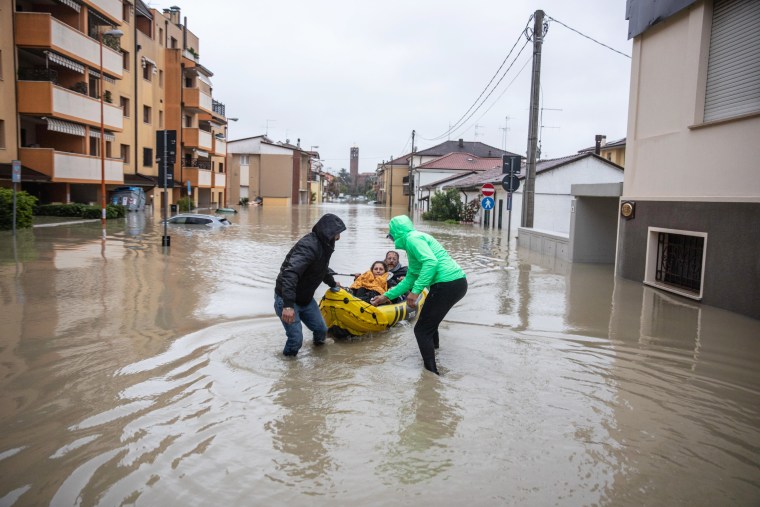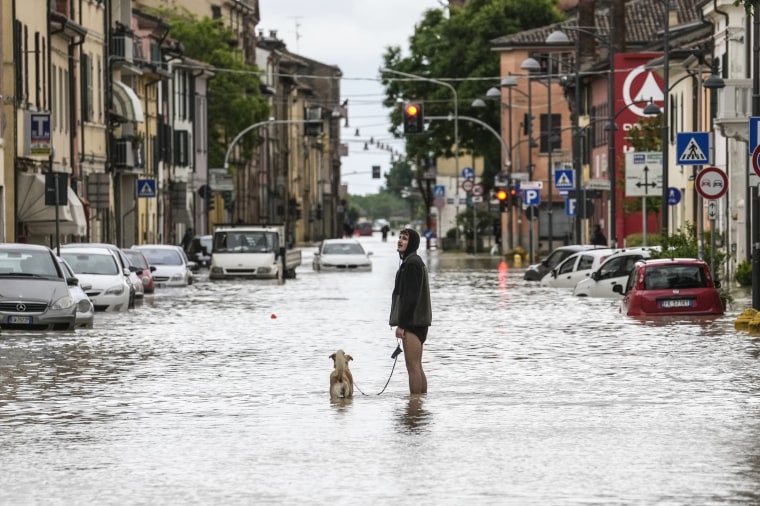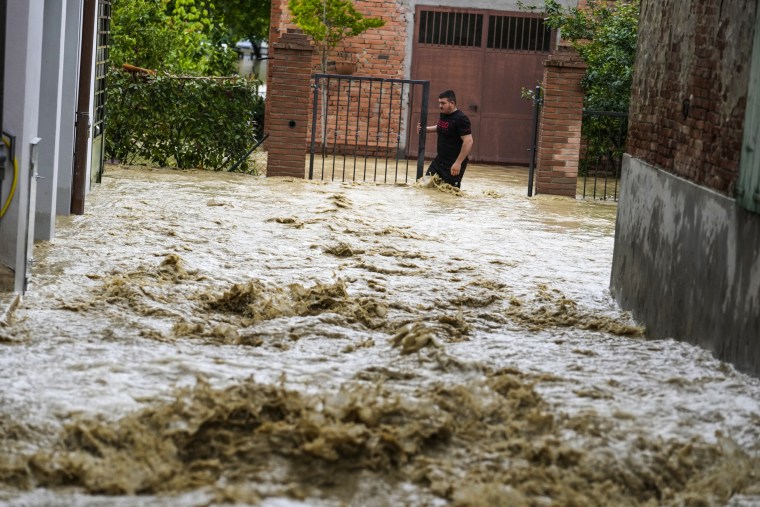Exceptional rains Wednesday in a drought-stricken region of northern Italy flooded rivers, killing at least five people, forcing the evacuation of some 5,000 and leading authorities to warn that Italy needs a national plan to combat the floods induced by climate change.
Heavy rain and flooding also forced Formula One to cancel this weekend’s Emilia-Romagna Grand Prix so as not to overburden emergency crews already stretched to respond to the emergency.
The days of storms stretched across a wide swath of northern Italy and the Balkans, where floods, landslides and «apocalyptic» evacuations were also reported in Croatia, Bosnia and Slovenia.
Italian Civil Protection Minister Nello Musemeci said five people died in floods that hit Emilia-Romagna particularly hard, forcing the evacuation of thousands in two dozen flooded cities. At a briefing, Musemeci said he hoped missing person reports would turn out to be false alarms.
He called for a new nationwide hydraulic engineering plan to adapt to the impact of increasing incidents of flooding and landslides, noting that an average of 200 millimeters (7.9 inches) of rain had fallen in 36 hours in the region, with some areas recording 500 millimeters (19.7 in) in that period.
“If you consider that this region averages 1,000 millimeters (39.3 inches) of rain in a year, you realize the impact these rains have had in these hours,” Musemeci said.

Citing the November landslide in Ischia, which killed a dozen people, Musemeci said Italy is increasingly experiencing an Africa-style tropical climate, with long dry spells punctuated by heavy rains that cannot be absorbed by the wind. floor.
«Nothing will ever be the same again… and what has happened in these hours is proof of that,» Musemeci said. “When the soil stays dry for a long time, instead of increasing its absorption capacity, it ends up cementing itself and allowing rain to continue flowing on the surface, causing absolutely unimaginable damage.”
The mayor of the city of Cesena, Enzo Lattuca, posted a video early Wednesday on Facebook to warn that continued downpours in the Emilia-Romagna region could flood the Savio river and smaller tributaries for a second day. He urged residents to move to the upper floors of their homes and avoid low-lying areas and riverbanks. He announced the closure of some bridges and streets to traffic after rivers of mud spilled through the city and into basements and storefronts.


Museumeci said 5,000 people had been evacuated, 50,000 had no electricity and more than 100,000 had no cell phone or landline.
The deputy head of the Civil Protection agency, Titti Postiglione, said rescue operations for those who need emergency evacuations were particularly difficult as many roads and routes were flooded and telephone service was interrupted. Speaking on Sky TG24, he noted that the affected floodplain covered a wide swath of four provinces that, until the heavy rains, had been parched by prolonged drought.
Some regional train routes remained suspended on Wednesday around Bologna and Ravenna, with severe delays elsewhere, the Italian state railway said.
Prime Minister Giorgia Meloni, traveling to the G-7 meeting in Japan, said the government was monitoring the situation and was prepared to approve emergency aid.

In the Balkans, the flooding of the Una River flooded parts of northern Croatia and northwestern Bosnia, where authorities announced a state of emergency. The mayor of the town of Bosanska Krupa in Bosnia said hundreds of houses had been flooded.
“We have an apocalypse,” Amin Halitovic told regional N1 network. “We can no longer count the flooded buildings. It’s never been like that.»
Dozens of landslides were reported in eastern Slovenia, many of which endangered homes and infrastructure.
In Croatia, hundreds of soldiers and rescue teams continued to deliver food and other necessities to people stranded in their homes in flood-affected areas. No casualties have been reported so far.

